As a medical assistant in a doctor's office, you may be asked to assist the doctor with patients who have lung disease or abnormalities. This lab teaches you how to prepare for and assess peak flow and perform a spirometric test.
Peak flow measurement is a quick test to measure air flowing out of the lungs. The measurement is also called the peak expiratory flow rate (PEFR) or the peak expiratory flow (PEF). Peak flow measurement can show the amount and rate of air that can be forcefully breathed out of the lungs. The measurement should be started after a full lung inhalation.
This lab is based on the entry-level competencies for which the Commission on Accreditation of Allied Health Education Programs (CAAHEP) and Accrediting Bureau of Health Education Schools (ABHES) test the Medical Assistant.
Learning Sequence Builds Confidence
The learner practices the procedure in the ‘guided mode’ (interaction hints and an expanded checklist guide) as often as they like.
When the learner is confident that they can accurately demonstrate the procedure without error, the learner plays the level in the ‘expert mode’ (no hints or checklist explanations) - which they can repeat as often as they wish.
Finally, when the learner is confident that they have mastered the procedure - they take a one-time ‘exam’ attempt which results in their grade for that procedure.
The Medical Assisting Clinical Suite (Professional) Edition is available for purchase through the Oculus AppLab for $149.99
Features
Guided Mode - ghosted hints show step-by-step positions, learner can 'see through' the patient to verify placement.
Oculus Quest Affordability & Ease of Use - next generation game development processes allow the untethered, mobile VR to present effective visual and interaction fidelity at 1/4 of the cost of desktop VR.
Feedback - Cloud-based enterprise incorporates real-time data acquisition that allows learner to track progress and mastery, and provides detailed insights for debrief with faculty.
Support - Enterprise incorporates Knowledge Base (with tutorial videos & FAQ) - combined with help desk support staff for learners and staff.
Assessing Peak Flow Checklist
- Gather supplies.
- Read the physician’s order and the patient EMR for the patient’s height and weight, which are needed to interpret the peak flow results.\
- Introduce yourself to the patient, ask them to identify themselves with their full name and date of birth.
- Explain to the patient that the peak flow and spirometry procedures will be measuring two things; how quickly you can blow out and how much you can blow out. Allow patient time to ask questions. Obtain consent before proceeding.
- Perform hand hygiene.
- Ask the patient to assume a standing position in front of the exam table.
- Ask the patient to assume a standing position in front of the exam table.
- Hand the peak flow meter to the patient and ask them to take a deep breath in and then blow out through the peak flow meter as strongly as they can.
- Record the measurement of the peak flow achieved for attempt 1 and reset the device.
- Hand the peak flow meter to the patient and ask them to take a deep breath in and then blow out through the peak flow meter as strongly as they can.
- Record the measurement of the peak flow achieved for attempt 2 and reset the device.
- Hand the peak flow meter to the patient and ask them to take a deep breath in and then blow out through the peak flow meter as strongly as they can.
- Record the measurement of the peak flow achieved for attempt 3 and reset the device.
- Enter the peak flow values for the three attempts in the patient’s EMR.
- Ask the patient to assume a sitting position on the exam table.
- Explain to the patient how to insert the single use mouthpiece.
- Ask the patient to don the nose clip.
- Ask the patient to take a very deep breath in, then put the mouthpiece in their mouth and blow out as hard and as fast as they can.
- Read and record the measurements achieved for the 3 spirometry attempts.
- Perform hand hygiene.
- Document the procedure and findings according to agency policy.

